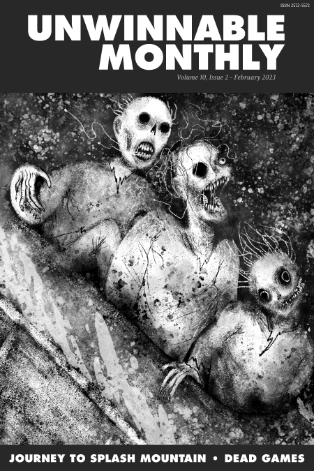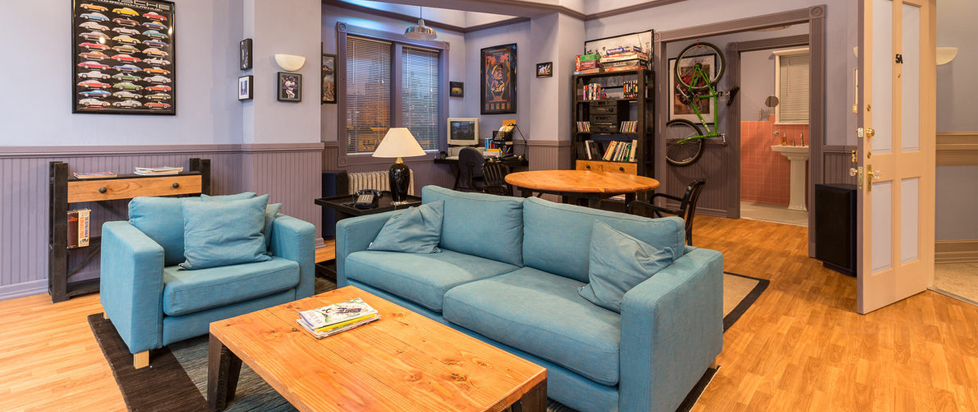
Being So Normal

This column is a reprint from Unwinnable Monthly #160. If you like what you see, grab the magazine for less than ten dollars, or subscribe and get all future magazines for half price.
———
What’s left when we’ve moved on.
———
We don’t have a theme this February, but it’s the month of love. (It’s also the worst month, as this video confirms.) I’m firmly on the pro-Valentine’s Day team – I think it’s fun! –- but I also think I’ll always prefer the aspects of the holiday that highlight both the transcendent and the tragic parts of love. Wine at brunch, anti-Valentine’s day parties, even (from the vantage point of my apartment, where I’ll be cooking a nice dinner and eating chocolate) the traffic jam of bookings and cancellations that starts, per my friend in Philly, in early January – these things make Valentine’s interesting. They acknowledge that everyone has a different relationship to love, even compared to yourself at a different point in life. It also happens in this bleak month, which I personally find perfect – because how do you celebrate love when it’s this bad outside, and at the same time how can you not?
I’m convinced that Normal People is the perfect show for this holiday. I am an on again-off again Sally Rooney fan who has only read one of her books, Beautiful World Where Are You?, whose ending honestly put me off of starting her others. Luckily for me though, both her previous books have been adapted as BBC/Hulu series, and after watching Conversations with Friends last spring and loving it, I recently went back to try Normal People.
If you don’t know, Normal People is Sally Rooney’s second book. It follows Connell and Marianne, who meet in high school because Connell’s mother cleans Marianne’s house. They start off a decade-ish friendship that is sometimes a relationship marked by absolutely horrendous communication, some emails, and a lot of things remaining unsaid.
I’ve said before that Sally Rooney books are just about making up four characters and putting them in a room with each other in different combinations. Other people (Rooney included) have mentioned that they are basically Victorian novels in millennial form, Middlemarch if Dorothea and Lydgate had cell phones and email. On a more fundamental level, Rooney’s work is great at capturing an audience both through a particular drama flavor and through small details. If you told me it was designed to be marketed to people who did humanities in college and have copyediting jobs, I’d believe you.

This marketability aligns both with Rooney’s capacity for understanding digital correspondence and the internet, and the Instagramification of her novels, especially Normal People. The cover graces the timelines of countless influencers and the halfway-read piles of almost everyone my age that I know. At the same time, Gloria Fisk notes that Normal People is a novel where love does not conform to easily sellable happy endings, but to other equally marketable cliches: “Obstructing every love story by processes that sully the purity of [youth], capitalism exposes its duplicitousness.” More directly, “The problem with capitalism for Sally Rooney is that it makes white people snobby, and snobbiness is a terrible obstacle to love.”
The draw of Normal People as a phenomenon is all about desire. And I don’t mean the desire that comes from falling in love: like The Chair for academe or Girls for Greenpoint in 2012, Normal People paints a particular life. We may not want to be Marianne, but we want to be in the space and time she’s in – or, at least, I want to. This is obvious when the main friend group eats strawberries with cream in an Italian villa, but equally present when they drink white wine at 1 p.m. and chat about their readings for class in a living room that is way, way too nice to belong to college students, or when they dance in a rural club to a remix that came out in 2016. In BWWAY there’s a nostalgia for three, maybe five years previous to the novel’s release that I feel the same way about. Tony Tulathimutte wrote about this in his review of the book for the Nation, taking the position that “the protagonists’ desire to embrace tradition is tempered only slightly by the awareness that this position is at odds with their politics.” He locates their desire decades, even centuries back, before the modern world made love and everything else horrible; I see the book cycling that nostalgia back to us again, a process by which the disaffected protagonists’ four lives become desirable to us not just because of their content, but because of their time.
I wrote about millennial art and nostalgia last summer, and at the time I said that certain narratives are obsessed with the “Gen Z experience,” the TikTok/bubble tea/failed situationship vocabulary you can use to describe a middle class, city-adjacent, particularly online group of younger people without even seeing or talking to them. Sally Rooney’s work doesn’t feel like this, because by all accounts she’s an insider into the things she is writing about: college education, Marxist background, recession adolescence. For me, at least, this feels more authentic than the alternative. And yet it touches on the same sense of frictionlessness I’ve complained about before in fiction about particular generations: we know Alice and Eileen have jobs, but we hear very little about them unless it’s to discuss how they feel about having relatively bourgeoise jobs in comparison to Felix, who works at a warehouse.

Why do we love what we love? Why do I like Normal People (the show) so much? Partially because it’s seamless – it’s prestige TV – but not so much so that it feels fake. It’s like looking at a picture from behind a clear sheet of plastic, where every so often the wind shifts the plastic and you find something unsettling or even annoying behind it. In this adaptation, that’s Marianne’s dismissiveness toward Connell’s restaurant job, or Connell’s consistent unwillingness to date Marianne in public. These are ugly parts of a “decade long love story” and without them the whole thing would fall apart.
Part of the reason I like it, of course, is that it’s marketed to me. I feel a connection, especially, to the tv adaptations. Rooney’s characters in Normal People are all English majors. The church where they hold Marianne’s father’s anniversary mass felt familiar. More broadly, I’m a white woman who graduated college in the late 20-teens and I like Marxism and a good love story.
One of my favorite things about the TV adaptation is the soundtrack, which I think is key to its nostalgia. It is a mix of 80s synthpop (also true of Conversations with Friends), instrumentals and Carly Rae Jepsen, mixed in with songs from 2012-2017 (CVURCHES, Billie Marten) and 2020 Selena Gomez which is nostalgia by proxy. The costume direction also contributes to this; Marianne’s collared sleeveless shirts are the most 2012 thing I can think of (I owned one of these the summer before I left for college). Connell’s timeless neck chain grows up from under a sporty turtlenecked jacket to mostly accompanying tees and jeans, but other male characters don the sweaters and skinny jeans look, or the boho-esque flowy skirts and handkerchiefs on your head thing that was going on when I graduated high school.
Is Normal People a period piece, then? I think it is. But even putting all the setting-building aside, because Normal People is about college students, it presents an unforeclosed sense of possibility that has become rarer to openly express since about 2016, and certainly in the last few years. The end of Normal People is when Marianne’s recognition that Connell is a good person turns into her realizing, crucially, that she deserves to have such a person in her life. Of course (spoilers!!!) this comes at the same time as she has to let him move to New York and end their relationship, in the book presumably forever: “what they have now they can never have back again.” That’s about love and being 21, sure, but it’s also about desiring a world that’s passed, and that we can’t have back – even though the new one is bright and infinitely full of possibility. Is there such a thing as nostalgia for believing that that’s true?
———
Emily Price is a freelance writer and PhD candidate in literature based in Brooklyn, NY.




